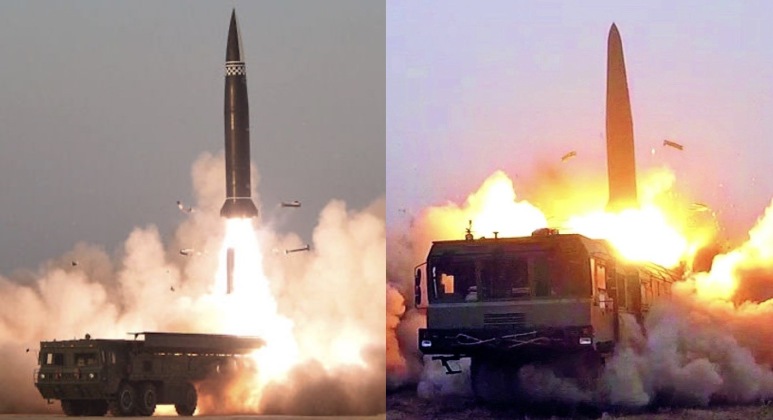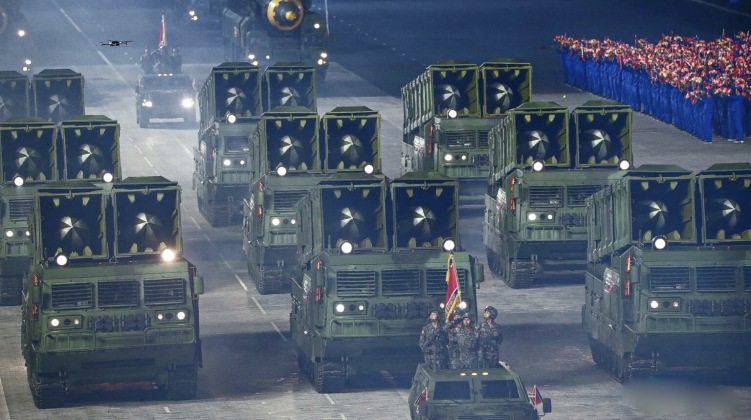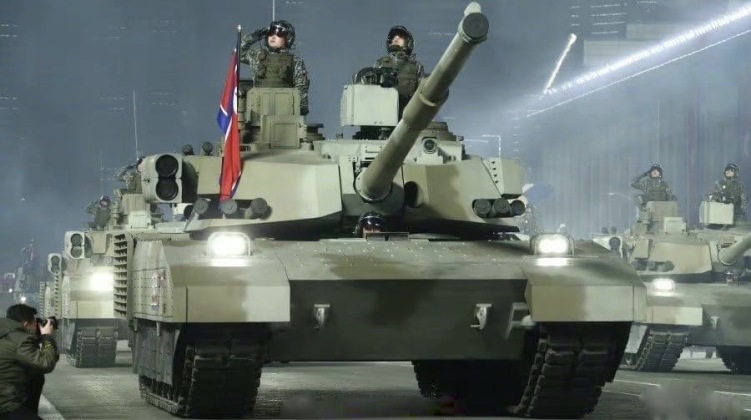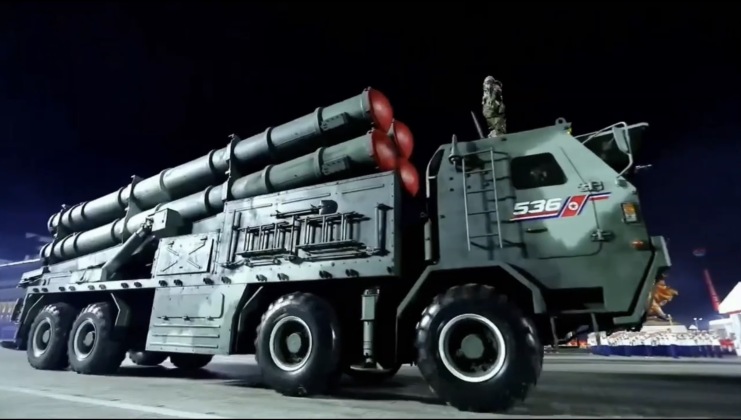News
Four North Korean Weapons Types Russia Could Seek to Import Urgently: How Each Could Shift the Balance in Ukraine

In late July the visit by Russian Defence Minister Sergei Shoigu to North Korea to attend celebrations marking the 70th anniversary of the Korean War’s conclusion sparked renewed speculation that Pyongyang could be planning major transfers of military equipment to the Russian Armed Forces. While reports of Russian forces receiving North Korean artillery rounds and other munitions have emerged from multiple Western sources since mid-2022, including from the White House in November, Minister Shoigu’s visit to an arms exhibition in Pyongyang only increased such speculation. Shoigu was at the time a guest of North Korean leader Chairman Kim Jong Un, and the venue was rarely openly toured by foreign officials. Although Russian industry has successfully drastically increased its output of equipment in a range of areas, from a more than doubling of military helicopter output in 2022 to an expected near tenfold increase in tank production, highly conservative acquisitions in many fields over the last 30 years, and in others high rates of losses or expenditures in Ukraine, mean that the Russian Defence Ministry has an incentive to look abroad for certain kinds of equipment. Russia’s widely reported imports of Soviet-built tanks from Belarus and various drones from Iran have been notable examples.
North Korea has one of the largest and most diverse defence sectors in the world, and in many fields produces equipment that outperforms its Russian equivalents or in some cases has no equivalents whatsoever. The standing of the East Asian state’s defence industries relative to those of Russian have improved markedly over the past 30 years, and particularly over the past decade, so that there is now a wide range of equipment which Russia could have an interest in acquiring particularly in wartime. Among more recently unveiled systems examples include new classes of drone designed for reconnaissance and strike roles broadly analogous to the American MQ-4 Triton and MQ-9 Reaper respectively. The compatibility of North Korean and Russian equipment, which are widely used together by operators across the world, and the fact that Russia has significant options to barter for imported weapons such as by providing fighter aircraft or additional oil, further increase the attractiveness of such deals. With the Western world not only emptying its arsenals to arm Ukraine, but also looking across the world from Jordan and Morocco to South Korea and Taiwan to source armaments for Kiev, Russia has been able to sustain the war effort with few signs of major arms imports so far – meaning the additional firepower from Korean imports could be a welcome boon to its war effort. While there are a very wide range of complex North Korean weapons systems Russia could seek to acquire, a look at five assets which Russia could seek to acquire urgently and integrate relatively quickly into its armed forces is given below:

KN-23 and KN-23B
First unveiled in February 2018, and intensively tested preceding its service entry the following year, the unnamed North Korean ballistic missile designated KN-23 by the U.S. Military provided a leap in capabilities to succeed the older Hwasong-5, Hwasong-6 and Hwasong-11. The former two of these older missiles are based on the Soviet Scud series, and the latter on the Soviet OTR-21 Tochka. The KN-23 is broadly equivalent to the Russian Iskander-M ballistic missile system, and benefits both from a semi ballistic depressed trajectory with apogees of 50 km and from the ability to conduct extensive in flight manoeuvres throughout its entire flight path. This has otherwise been described by North Korean state media as an “irregular orbit” with “low-altitude gliding leap type flight mode,” and otherwise as a “peculiar mode of guiding flight.” This proved sufficient that one of the most capable Western anti-missile systems the AEGIS proved unable to even detect the missiles in flight, and will cause serious complications for possible attempted interceptions. The Korean KN-23 missile has a number of significant advantages over the Russian Iskander-M, with its larger size facilitating an engagement range of approximately 700km when on a depressed trajectory compared to just 500km for the Iskander, while a further enlarged variant the KN-23B provides a much extended range and massive 2.5 ton warhead.
Iskanders are among the assets where Russian shortages are thought to be most acute, as while the country maintains significant stockpiles of the missiles and has increased its industry’s output, the bulk of the arsenal is relied on heavily to counter NATO in a event of an escalation of current hostilities meaning it cannot be utilised in the war in Ukraine. Acquisitions of the KN-23 could allow Russia to significantly increase precision guided ballistic missile strikes in Ukraine, with use of the Iskander remaining conservative and the missiles prioritised for particularly important targets. Adding the capacity of North Korean industry for producing cutting edge tactical ballistic missiles to Russia’s own, with Korean capacity thought to be very large based on the rates at which it can fire the missiles in exercises, could thus place significant further pressure on Ukrainian forces at a time when their air defence capabilities are notably dwindling.

KN-24 and Hwasong-11
The shorter ranged counterpart to the KN-23, also unnamed and designated KN-24 by the Pentagon, the missile system appears to be a cheaper asset capable of laying down fire in greater volumes with similar degrees of precision. Relatively little is known about the new missile but a U.S. Congressional Research Service report referred to it as an asset which “demonstrates the guidance system and in-flight manoeuvrability to achieve precision strikes.” Like the KN-23, it uses both wheeled and tracked mobile launchers, with the shorter ranged missile system seen using the latter more frequently. Tracked launchers suitable for off-road operations are highly suitable for the Korean Peninsula due to the much smaller scale of the war zone, the massive strike capabilities of the U.S. and its allies, and the benefits of taking cover in mountainous terrain. Russia, however, is expected to be more interested in wheeled variants if looking to make acquisitions – mirroring how it never developed off-road variants of the Iskander-M.
Although Russia neglected to develop a cheaper short ranged ballistic missile class, in part due to the greater distances that would be involved in a Russian-NATO war than in the more confined battlespace in Korea, the confinement of hostilities to Ukraine at present where shorter ranged Soviet-built missiles have been widely used by both sides could make the KN-24 a highly valued asset for the frontlines. With Russia having restored its arsenals of OTR-21 Tochka missiles for use in Ukraine, the country may also seek to purchase North Korea’s own near identical derivative of the missile the Hwasong-11. This would not only help conceal the fact that Russia is acquiring North Korean missiles, unlike what would be the case for the KN-24 which has no Russian equivalent, but it could also be significantly cheaper and allow the East Asian state to replace the older missiles with newer ones in many of its own frontline units.

T-62 Tank and 115mm Tank Rounds
The Russian Army in the second half of 2022 began to deploy T-62 tanks restored from storage and modernised with new fire controls and protection systems for combat in Ukraine, with the vehicles reportedly receiving third generation thermal sights, Kontakt-5 or Relikt explosive reactive armour, and possibly even new APFSDS rounds for superior anti armour capabilities. The tanks are prized for their low logistical footprints and the ease with which militia forces and conscript units can train on them. Beyond Russia, North Korea is the leading operator of the T-62 having produced the class under license into the 1980s, although it favoured the tank for very different reasons most notably its suitability with some modification for mountainous terrain. Korean derivatives of the T-62 have been exported to Iran and Ethiopia, and while the class has long since been phased out of production in favour of two generations of newer vehicles over 1000 are thought to be in service.
Exporting T-62s to Russia could allow North Korea to finance increased production of its next generation battle tank unveiled in 2020, which unlike its Russian equivalent the T-14 Armata appears to have been introduced into service. Perhaps more importantly than T-62s themselves, North Korea could be a key source of 115mm ammunition which Russia is not thought to have maintained significant reserves of after it phased the T-62 out of frontline service, with subsequent Soviet and Russian vehicles having used 125mm rounds. The T-62’s U-5TS is the only tank gun to have ever entered service in significant numbers using munitions of that calibre. North Korea is also reported to have developed new generations of 115mm rounds long after the Cold War ended which, if confirmed, would likely provide a superior performance to the rounds currently in Russian stockpiles. The fact that T-62s are used by both countries means North Korean tanks and their munitions could potentially be seamlessly integrated into the Russian Army and associated paramilitary and contractor units, which could be highly attractive should the Defence Ministry seek to continue operating T-62s and not plan to phase them out once newer but higher maintenance tanks such as T-90Ms become available.

KN-09 and KN-25
Artillery is seen to have played a particularly central role in the ongoing Russian-Ukrainian War, and represents an asset class which North Korea’s armed forces have for decades very strongly emphasised and invested to gain key advantages in. The importance of very long range rocket artillery systems has only increased since the end of the Cold War to compensate for the lack of modern manned combat aircraft and provide an alternative and far less vulnerable and more cost effective means of striking targets deep behind enemy lines with precision. With North Korea reported by U.S. sources to be supplying artillery rounds to the Russian Military, a next step could be supplies of top Korean rocket artillery systems such as the KN-25 or the lighter KN-09 with the former in particular likely to provide a significantly superior strike capability than existing Russian artillery assets can. The KN-25 first entered service in 2019, and has the longest range in the world other than the larger Chinese PCL191 system. Able to engage targets up to 400km away, including with nuclear warheads, it provides a reach greater than that of many ballistic missile classes while allowing for saturation of targets in ways ballistic missiles cannot achieve due to their far higher costs. The system appears to be being produced on a very large scale, and although apparently in high demand domestically diversion of supplies to Russia could be a game changer for the war in Ukraine, earn valuable export revenues, and provide a further means for Pyongyang to place pressure on its Western adversaries.












